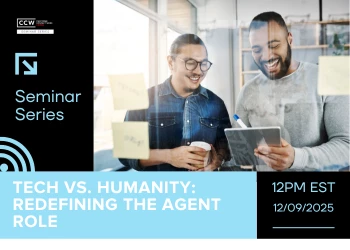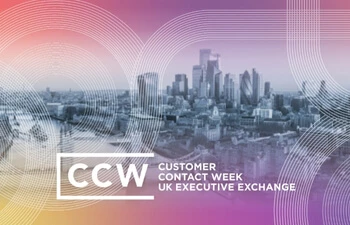CX Isn’t a Platform. It’s a Philosophy
Several reports are warning that quality CX is facing a crisis. Nathalie Schooling profiles two brands getting it right and shares three key actions CX leaders can take
Add bookmark
I’ve spent more than 20 years watching companies chase the next big thing in customer experience. They attend conferences, buy platforms, install chatbots, launch self-service portals, roll out loyalty programs. All of it arrives with fanfare. But here is what rarely gets spoken: none of it matters if your people do not behave like they care.
Customer experience is not a plug-in solution. It is a choice. It is the daily decision your team makes to act with empathy, to own a problem, to speak to a customer like a human, not a transaction. That is the heart of CX. Technology, platforms, data, they are enablers. But they do not drive trust or loyalty on their own.

Don't miss any news, updates or insider tips from CX Network by getting them delivered to your inbox. Sign up to our newsletter and join our community of experts.
The big problems in CX
In the past few years, the evidence has been worrying. Forrester's Global CX Quality Index reported a third consecutive annual decline among US brands. A study by Qualtrics XM Institute in 2023 found that nearly seven percent of global revenue could be at risk because of poor experiences. These numbers are warm warnings. They tell us that we are doing something wrong in the way we solve for customers.
And what am I seeing on the ground? I see two patterns. First, organizations believe they need to fix CX by layering more tech. I sit in meeting rooms where someone says, “we need the next-gen platform” and someone else nods, as if that will somehow fix the human variable.
Trust me: you cannot automate empathy. You cannot code curiosity. You cannot buy culture off the shelf.
Second, I see frontlines constrained. Agents and customer-facing teams do exactly what they are told. They are measured on speed, volumes, platform deflections. They are handed scripts. They cannot stray. And so, the moment of truth arrives, and the customer feels the hand-offs, the gaps, the silence. And the brand promise falls flat.
The organizations bucking the negative trends
Let’s look at what works.
One UK retailer, Timpson, embraced a culture where front-line staff are empowered. They climbed significantly in CX rankings after showing strong scores in empathy and meeting expectations. Their secret was not digital wizardry but trust and autonomy.
At the luxury end, the legendary service brand Ritz-Carlton gives any employee up to US$2,000 to fix a guest problem immediately. That single policy signals ethics, responsibility, empowerment.
In other words, behaviour by design. Not because we installed a chatbot, but because we trusted a person.
Key actions for CX leaders
If you lead CX, here is what I suggest you consider now. First, make CX a behavior standard, not a project. Define three behaviour commitments. Ask every team member, “Is this how we show up when no one’s watching?”
Second, invest in your managers. Great culture is made in the small moments: the coaching conversation, the team debrief, the recognition for someone who acted, even when the call time clock ticked.
Third, treat tech as support, not substitute. Use artificial intelligence (AI), automation, analytics, yes – but anchor them in human judgement. The best journeys still begin with a person believing in the customer.
Because if your people do not care, your platform will not either.
At the end of the day CX is, and always will be, a human game. The real question isn’t “which bot do we deploy?” It is “Do we care enough to make it better for the person on the other side of the interaction?” Everything else is just noise.
Quick links
- Five things all CX leaders need to prioritize
- CCW Europe Summit 2025: 5 Defining themes shaping the future of CX
- The empathy gap: Fixing the most critical failure in the customer journey
All Access: Future of CX 2025

Join us to hear from industry leaders, innovators, and CX experts as they share insights, strategies, and tools for harnessing customer feedback to drive meaningful change.
Register Now


























